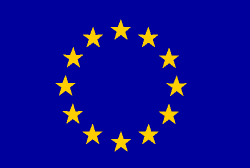The
European Dimension of the Problem
The
hazard posed by rapid slope failures is common to all Community countries
with mountain environments. Further, it is relevant not just to the
local inhabitants but to all users of these environments. These include
winter and summer tourists who may boost local populations by a factor
of ten, owners of equipment, infrastructure and land who live elsewhere,
and users of roads and railways. For example, the Biescas campsite
tragedy of 7 August 1996 in the Spanish Pyrenees affected holidaymakers
from throughout Europe. Devastation of communication and transport
links is also well documented. For example, five people were killed
by a debris flow on the Italian section of the Trento-Bolzano-Brennero
highway on 15 August 1998. The hazard clearly has a European dimension.
A
European approach to assessing the hazard carries a number of advantages.
While acknowledging that a great deal of expertise is available at
the national level amongst scientists, engineers, and civil protection
authorities, this expertise is unevenly dispersed between countries.
A number of techniques have been developed to identify and map natural
hazards and are used as standards by the relevant authorities in some
European countries. In Austria, for example, hazard mapping combines
information on past events with geomorphological surveys (e.g. Aulitzky,
1994b). However, there is by no means a uniform approach in Europe.
For example, the Lombardy Regional Geological Survey has no model
or a specific law regarding debris flow hazard evaluation and prevention.
In addition, engineering practice may be based empirically on local
knowledge and experience, overlooking new techniques developed elsewhere.
This applies particularly to recent advances in GIS and river basin
modelling techniques. At the same time, those developments may be
in the form of research studies published internationally but not
easily assimilated and applied locally. A European consortium therefore
provides benefits in terms of introducing new technologies and experience
from different countries, combining technologies in complementary
fashion, disseminating the technologies to end-users at a European
scale, and proposing a code of standards.
The
European Added Value for the Consortium
The
DAMOCLES project will unite four European research teams of proven
and complementary expertise. No single European agency is able to
provide the width of expertise or assemble the range of datasets to
tackle the problem as comprehensively. This applies particularly to
the complementarity of field data collection and modelling skills
and the complementarity of model scales (regional, small basin, large
basin). The direct involvement of six major end-users from Spain and
Italy is also a major force for dissemination of the project technologies
and the development of standard methodologies at the European level.
EU
Policies
This
project is relevant to EU policies which require environmental impact
assessments. These policies include Cohesion and Agriculture. For
example, the Agriculture Policy promotes afforestation as an alternative
use of agricultural land and the development of forestry activity
on farms. Vegetation cover is an important control on debris flow
occurrence and the project methodologies could therefore be applied
to assess the impact of afforestation in mountain areas. Because of
the physical basis of the models, the impacts of different options
for afforestation could be explored before any one was implemented,
enabling the optimum to be selected, ie the one with the least adverse
effect.
Similarly,
the Cohesion Policy calls for environmental protection and socio-economic
development to be reconciled. The project methodologies could therefore
be applied to provide environmental impact assessments related to
relevant socio-economic developments in mountain regions.



